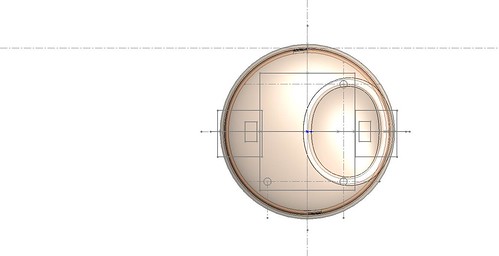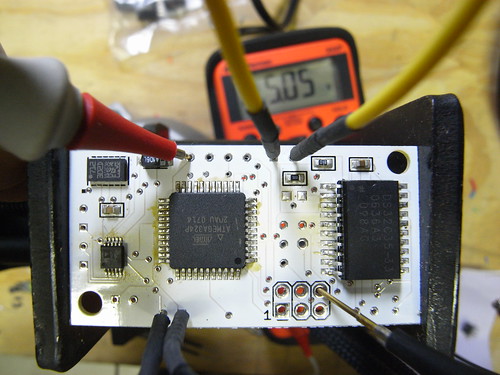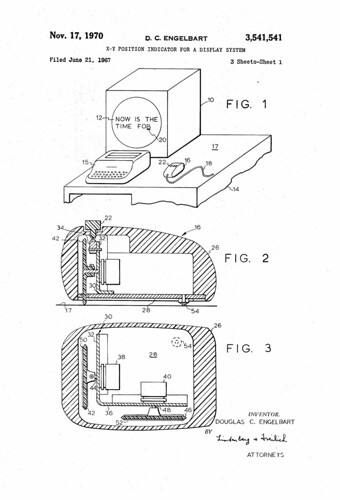(Essay for Share Festival Catalog 2008)
There are a few things to say about manufacturing, design and digital arts. First, we’re not talking about manufacturing. Manufacuring is about making things on a large scale using machinery. Manufacturing evokes cavernous, cold, awesomely huge assembly lines with scales all out of proportion to the experiences of mere mortals. Factory floors throwing sparks, littered with metal shavings, huge overhead cranes moving impossibly large masses of steel – this is what manufacturing means. Half million ton crude oil-carrying super tankers are manufactured. The Airbus 380 is manufactured. Millions of Herman Miller Aeron Chairs are manufactured. Billions of cellular phones are manufactured. These things have meaning in the idiom of manufacturing. Manufacturing is the engine of growth and dispair of the 20th century.
If anything, we’re talking about a kind of materialization of ideas. Slick connections between an your imagination, a circuit board and a 3D printer. It’s artful for its scale and personalization. Small-scale, passionate, individual ideas made material. Why is this different from manufacturing? Because manufacturing deals in enormous scales – scales of time, material, logistics, operational fortitude, finances, consumption of natural resources. Ultimately, manufacturing endeavors are impossible imbroglios of spin-doctors and reassurances, speculation, trust and hope as much as they are supply-train logistics and CAD systems. Just ask the Boeing 787 “Dreamliner” team. Is it advanced avionics and carbon-fiber-reinforced plastic skins or spin-control and renegotiated contracts that’ll make that perpetually delayed endeavor a success?
The sad consequences of manufacturing’s scale is that it defaults to the least common denominator. Manufacturing on a mass scale can only be an effective business enterprise when you make one thing that millions and millions of people are convinced they need to buy. Customization as a manufacturing process has not moved much beyond Henry Ford’s Model T color option – you can have any color, so long as it’s black. An iPod is an iPod is an iPod, hand-painting and laser etching not withstanding. True customization means materializing one’s own designs, one’s own imagination. This is where we begin.
What we are talking about are emerging “materialization” – not manufacturing – processes. What makes it worth talking about is that it is the power of creation that manufacturing is able to achieve, but done at an entirely different scale – quicker, cheaper, individually, with fewer intermediaries and fewer incumberances. This is the crucial element – there are fewer and less awkward hurdles, deals, negotiations and alliances to be formed in the process of materializing an idea. The power of the idea and its “moment” is not lost through the trials of enrolling people, machines, enterprises, financiers into your cause. It’s as if a sketch in a notebook can materialize immediately. No more fumbling around with awkward descriptions of your weird idea – let the material object speak for you.
What else can be said about this different kind of idea-manufacturing? How does it integreate with design and digital arts? It relies on “toolkits” consisting of digital software and hardware, fab machines, CNC “Robodrills” and 3D modeling. As importantly, the toolkits are also the far-flung networked communities of craftspeople and designers, artists and technologists sharing ideas and insights. The practical tradecraft starts from the bottom and works its way up. We’re familiar with the elements of this process, and the activities taking place in various corners of the digital arts and art-technology communities. This is an emerging practice informally taken up by thoughtful designer-tinkerers. It is a practice that will find greater adoption within more formal and conservative design, engineering and art communities as its significance is refined.
The “tooling” for this practice includes open-source firmware for inexpensive microcontroller-based kits like the Arduino; hacked Nintendo Wii controllers; low-cost, rapid-turnaround printed circuit board production houses; free development environments like Processing; online knowledge sharing communities; parts suppliers with no minimum orders, and so forth.
The “manufacturing process” is a kind of extended sketching activity. Ideas are first expressed informally, perhaps with a simple “wouldn’t it be cool if..?” question at a moment of inspiration. But the question should be answered – and it can be, often enough, with a quick pen drawing, some poking around the net for practical answers or to source some parts or other material – perhaps even finding other people who have asked the same question and thereby entering into conversations with all the other similarly inspired folks out there on the networks. In short order a refined, functional technology engine is created using small-scale surface mount printed circuit board techniques so as to fit within the refined contours of a fab’d surface model. Now you have a fully functioning materialization of your idea – much easier to answer that initial question with the real-deal. You can share it, put it in other people’s hands and work through the nuances of your idea.
What does this all mean for an emerging design-art-technology practice? At present, the evidence of something compelling centered around new interactions is indicated by a richly stocked cabinet of curios – expressive artifacts and objects that, like early Net Art, stitch together inputs and create expressive outputs. Only — and this is important – they do so off the computer screen, and with no keyboard and mouse. Rather, these expressive objects form their interactivity around physical actions that may include the Nabaztag’s articulating rabbit-like ears, or Clocky the coy alarm clocks that roll away when you try to hit the snooze button, or Maywa Denki’s punch-drunk dancing BitMan character. These are distinct kinds of digital objects that mix physical space, digital technology and design.
We know that the art of digital media continues to emphasize the screen, the keyboard, the mouse and the network. The weak signals suggest kinds of design-art-technology that are growing tired of the screen. Digital art is ready to move beyond the confines that Douglas Englebart and his contemporaries created in 1968 with their patent line drawing depicting the now canonical assembly of keyboard, screen and mouse. If there is a “new materiality” to digital arts, it will emphasize material interactions in physical space, embodied experiences and contexts beyond the typically sedentary confines of the screen/keyboard/mouse/network assemblage.
For this new process to do something new, it must become a ployglot practice steered by undisciplinary craftspeople who believe in the possibility of creating fictional, unbelieveable, even preposterous objects that say as much about what they’re moving away from – the uninspired, least-common denominator landfill-destined plastic device – as they say about what sort of near future world we could have. What is emerging is an ability to make your own stuff – not just “skinning” your mobile or modding an MP3 player. Materializing ideas is about making your own – “whatever” – unanticipated, unknow, visionary, expressive things. It is not a manufacturing process. This is a process that requires multiple perspectives and multiple skills thoroughly mixing engineering-design-art into a hybrid sensibility. It is a process that’s strictly for trouble-makers and boundary crossers. Nothing expected and everything unexpected will come from this.
Continue reading What Is Manufacturing in the Era of Design-Art-Technology?



